Las Vegas drone conference is the industry’s ‘coming-out party’
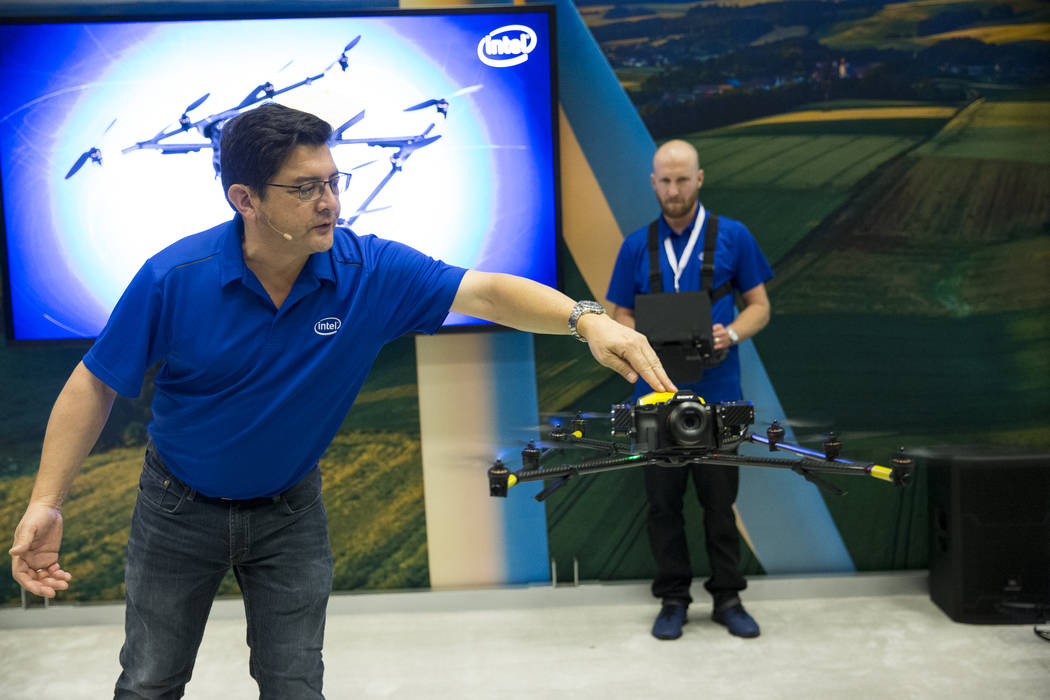





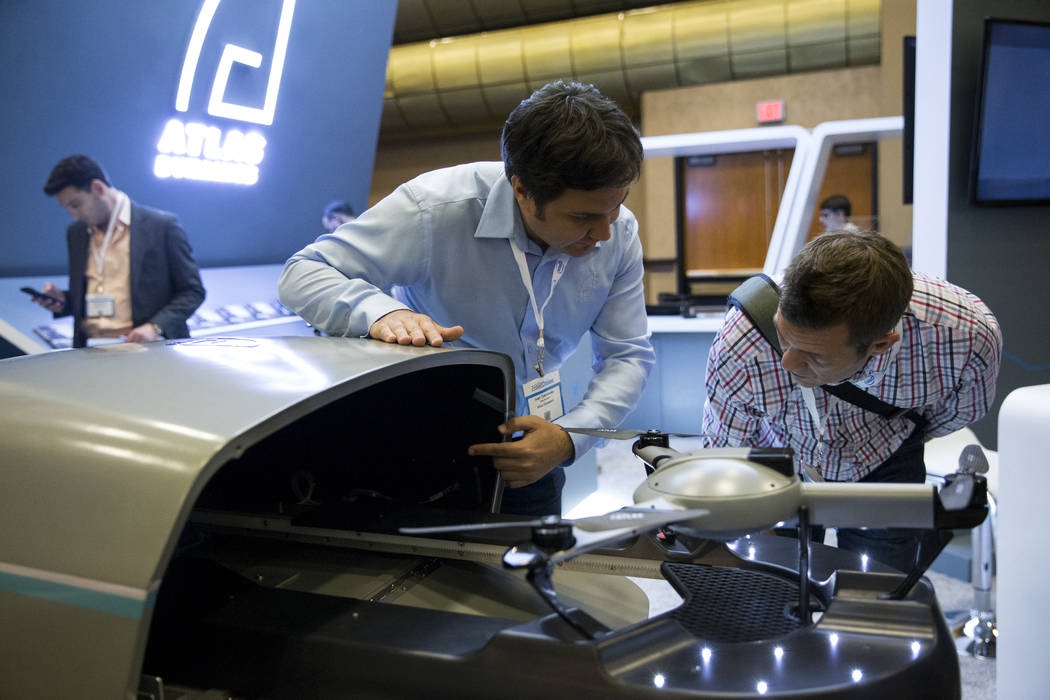

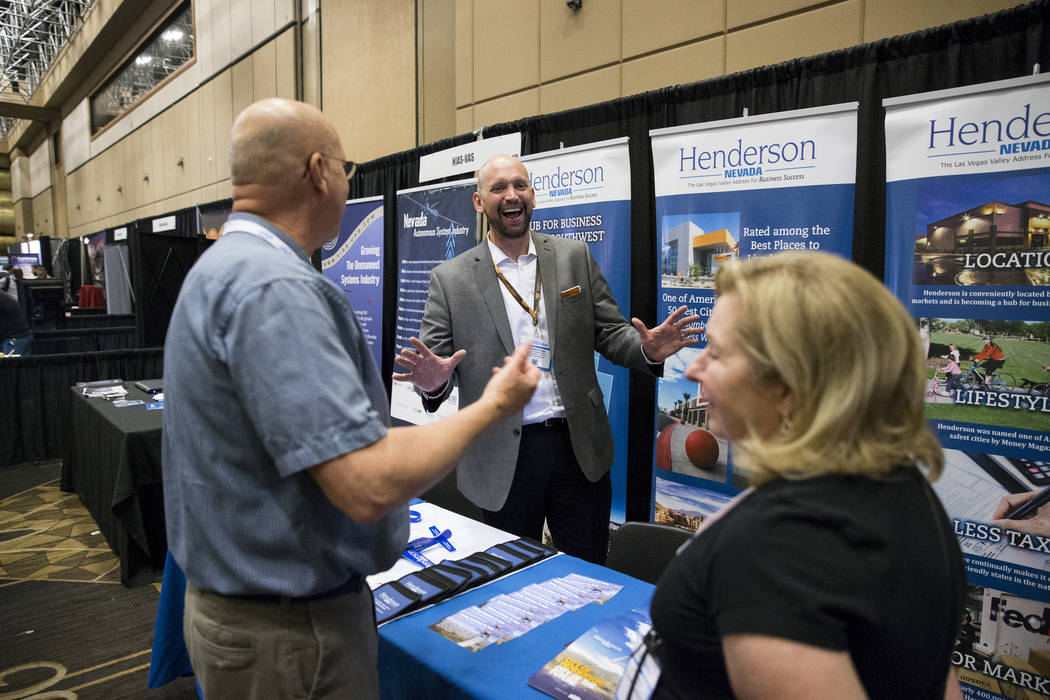
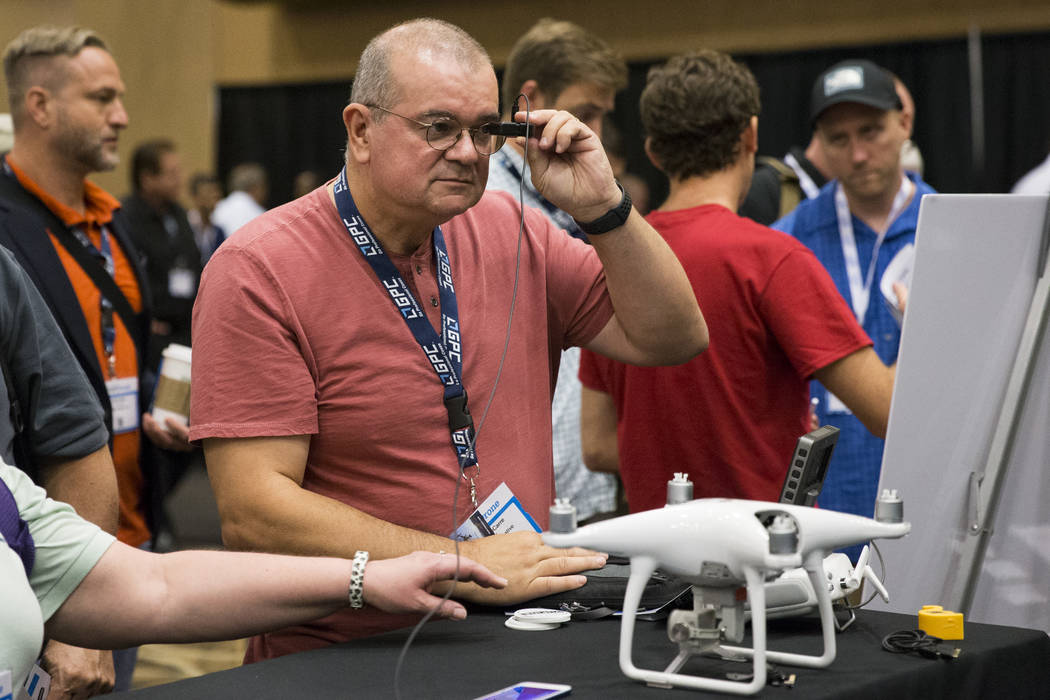





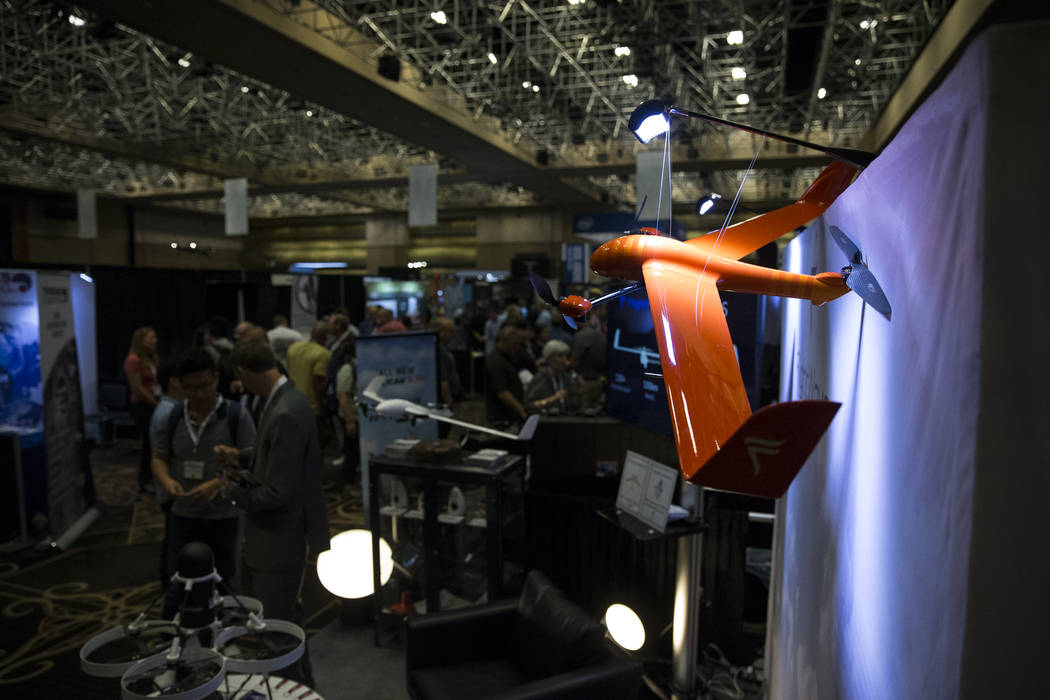
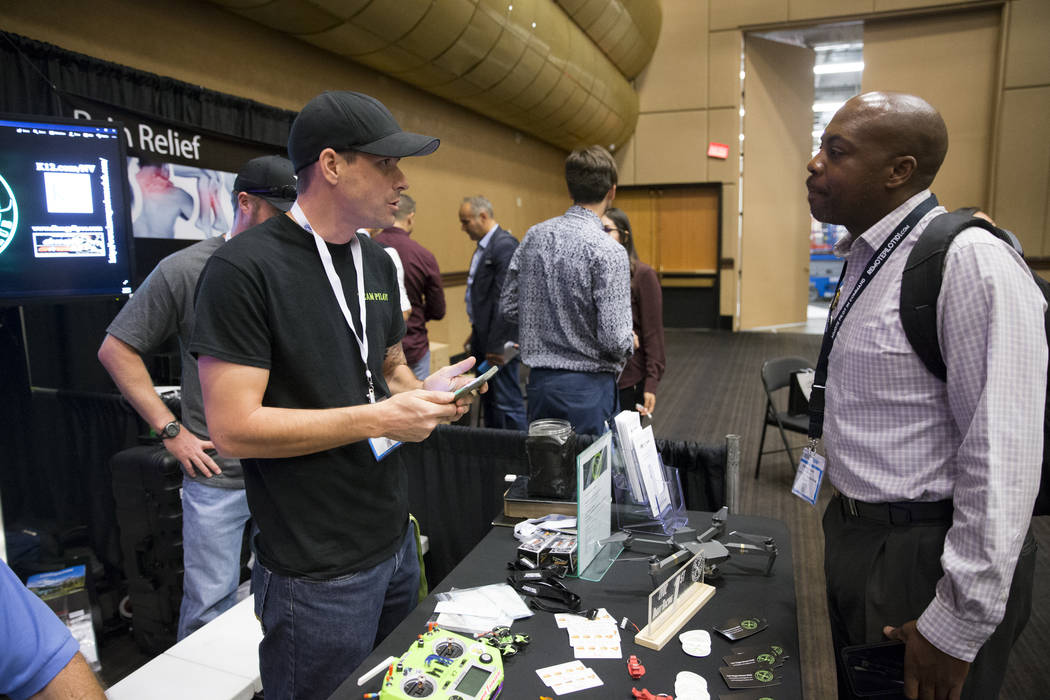

Last year’s InterDrone introduced the idea of using drones for commercial applications. This year, InterDrone’s third-ever conference is all about how the public sector and different industries are doing just that.
“This is the real coming-out party,” said Ted Bahr, chairman of InterDrone, a conference dedicated to commercial drones that kicked off Wednesday and runs through Friday at the Rio.
Commercial-drone operators had much to say during opening day of InterDrone about best practices and how to implement drones into industries such as mining, construction, search and rescue and agriculture.
During his opening keynote, Federal Aviation Administrator Michael Huerta highlighted how unmanned aerial systems helped with search and rescue and infrastructure inspection in the aftermath of Tropical Storm Harvey.
“A railroad company used drones to survey damage to a rail line that cuts through Houston. Oil and energy companies flew drones to spot damage to their flooded infrastructure,” Huerta said. “Unmanned aircraft helped a fire department and county emergency management officials check for damage to roads, bridges, underpasses and water treatment plants that could require immediate repair.”
The pace of innovation in the drone industry is “like nothing we have seen before,” Huerta said.
Regulations
But the sky is not currently the limit for commercial drone operations. Several InterDrone sessions Wednesday were dedicated to the challenges and opportunities that the Federal Aviation Administration presents to the industry.
“The drone industry is unique in that the commercial drone industry wants to be regulated,” said Lisa Ellman, a speaker at InterDrone and partner and chair of the Global Unmanned Aircraft Systems Group at Washington, D.C.-based Hogan Lovells law firm.
The administration isn’t able to develop and implement regulations quickly enough, she said.
The FAA implemented regulations last year for the type of commercial drones allowed to fly, where operators can fly them and for the certification process needed in order to legally operate a commercial drone. Since those regulations were implemented last year, Huerta said the administration has issued more than 59,000 remote pilot certificates.
Additional regulations will help the industry to grow and to “unleash” its economic potential, Ellman told the Review-Journal.
The industry is anxious, Ellman said, to see regulations allowing for drone package delivery, or for operating drones at night, or to fly over people, for example.
Operators may be anxious, but Derek Lyons said it is unlikely that the commercial drone industry has a shot of getting such broad standardized, seamless regulations for these uses.
“There’s just no end to it, because you have a disruptive technology that moves a heck of a lot faster” than the FAA, said Lyons, a speaker at InterDrone and CEO of Florida-based Beyond the Drone, an advisory services company.
Huerta, though, has repeatedly emphasized that integrating drones into airspace isn’t just an FAA issue.
Chris Walach, director of all testing sites in Nevada for unmanned aerial systems, is working with the FAA to develop some regulations.
“They are moving at a speed that nobody’s ever seen before,” Walach said. “It’s not quite the speed of technology, but it’s light years ahead of where they were five years ago.”
As one of seven FAA-designated unmanned aerial system test sites, Nevada is able to host companies looking to test different technologies that aren’t yet federally regulated.
Work ahead
Meanwhile, “bad actors” — as Huerta described —are flying drones recklessly near sports stadiums and in busy airspace around airports, without previous clearance from the FAA.
“We’re receiving an average of about 200 drone-sighting reports from pilots each month this year,” Huerta said. “That’s significantly higher than in both 2016 and 2015.”
In just the past month, the FAA has received “a number of reports” from Las Vegas-area pilots of drones flying at altitudes of up to 6,000 feet, he said. The maximum altitude for commercial drone flights is 400 feet, unless the operator gets a waiver.
The drone industry has many issues still ripe for resolution, including keeping drones out of unwanted areas and keeping drone data secure.
“For some of the industries now using — or soon to be using — drones, cybersecurity and how it relates to their drone usage is a new concept,” said Nina Tucker, co-founder and vice president of technology for Twin Oaks Computing, a software product company.
Tucker told the Review-Journal via email that drone consumers should have a basic understanding of some “basic concepts” such as:
— Identity: each component of a drone system should be able to verify its identity — like we use a driver’s license or passport.
— Authentication: is this component trusted to send commands? receive data?
— Integrity: can I trust the data I receive from the drone has not been tampered with?
— Confidentiality: is the data encrypted or clear?
Drone service providers should have an answer for these cybersecurity features, she said.
“How can a consumer of drone technology make smart choices in purchasing drones or drone services? What questions should they ask around cybersecurity and data privacy? What kind of responsibility falls to the drone manufacturer and the drone service provider?”
A crowded market
Rapidly evolving challenges to the drone industry and regulatory murkiness hasn’t resulted in much of a deterrent to enter the industry.
The FAA estimates that there will be 2.5 million commercial drones operating within the United States by the end of this year.
“Right now everybody is still kind of climbing over each other,” Bahr said, trying to establish their role in the industry. “There’s still way (more) companies that are trying to get into the market than will ultimately survive.”
Bahr predicts many newcomers will ultimately become third-party drone service businesses.
“So, if you’re a real estate agent, you don’t have to learn how to fly drones, somebody will come in and do it for you —just like somebody comes in and photographs the house for you that you’re marketing.”
Contact Nicole Raz at nraz@reviewjournal.com or 702-380-4512. Follow @JournalistNikki on Twitter.


















